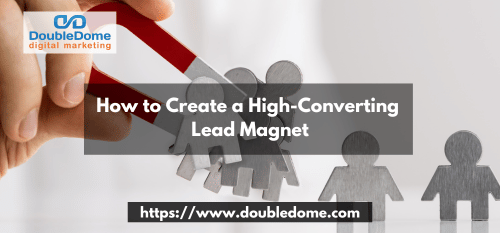By Jo Medico
A strong lead magnet is one of the most effective ways to attract potential customers and grow your business. But not all lead magnets are created equal. To generate high-quality leads and boost conversions, you need to offer something truly valuable. In this guide, we’ll walk you through the key steps to creating a high-converting lead magnet that attracts, engages, and converts your ideal audience.

1. What Is a Lead Magnet?
A lead magnet is a free resource that businesses offer in exchange for a prospect’s contact information—usually an email address. It provides immediate value and helps nurture potential customers toward making a purchase.
Examples of high-performing lead magnets:
Ebooks & Guides – In-depth resources solving a key problem.
Checklists & Templates – Ready-to-use tools that simplify tasks.
Webinars & Video Training – Educational content with expert insights.
Free Trials & Demos – Hands-on experience with your product/service.
Discounts & Coupons – Exclusive offers that encourage action.
Quizzes & Assessments – Interactive tools that deliver personalized insights.
2. Steps to Create a High-Converting Lead Magnet
Identify Your Target Audience’s Pain Points
Your lead magnet should address your ideal customer’s specific problem or need. Ask yourself:
- What challenges does my audience face?
- What quick win or solution can I provide?
- What type of content would they find most valuable?
Use customer surveys, social media polls, and keyword research to gather insights.
Choose the Right Type of Lead Magnet
Select a format that best delivers the solution. For example:
- If your audience prefers quick wins, create a checklist or template.
- If they need in-depth knowledge, an ebook or webinar is ideal.
- If they want personalized insights, offer a quiz or consultation.
Create High-Value Content
Ensure your lead magnet is concise, actionable, and visually appealing. Tips for creating engaging content:
Use clear, benefit-driven headlines.
Keep it easy to digest—use bullet points, subheadings, and visuals.
Include a strong call-to-action (CTA)—tell users what to do next.
Ensure mobile-friendliness for easy access on any device.
Design an Eye-Catching Landing Page
Your lead magnet needs a dedicated landing page optimized for conversions. Key elements:
A compelling headline that highlights the benefit.
A brief description explaining what they’ll gain.
A simple form—only ask for essential details (e.g., name & email).
A strong CTA button—e.g., “Get Your Free Guide Now”.
Promote Your Lead Magnet Effectively
Once your lead magnet is live, drive traffic to it using:
Website Pop-ups & Banners – Capture visitors on key pages.
Social Media Ads & Organic Posts – Share on LinkedIn, Facebook, and Twitter.
Email Campaigns – Offer it to your existing audience.
SEO & Blog Content – Optimize for relevant keywords.
PPC Advertising – Run targeted Google or Facebook ads.
YouTube & Webinars – Mention it in video content.
Referral & Partner Networks – Get others to promote it for you.
Nurture Your Leads
After collecting emails, don’t let your leads go cold!
Send a welcome email immediately after sign-up.
Provide additional value through follow-up emails.
Use automation to guide leads toward your paid offerings.
Analyze & optimize performance—track downloads, open rates, and conversions.
Segment leads for personalized email campaigns.
3. Common Lead Magnet Mistakes to Avoid
Being Too Generic – Your lead magnet should address a specific need.
Asking for Too Much Information – Keep sign-up forms short and simple.
Lack of a Clear CTA – Tell your leads what to do next.
Not Delivering on Your Promise – Ensure your content meets expectations.
Ignoring Mobile Users – Optimize your lead magnet and landing page for mobile devices.
4. How to Measure the Success of Your Lead Magnet
Tracking key performance indicators (KPIs) will help you improve your lead magnet over time. Here are some metrics to monitor:
Conversion Rate: Percentage of visitors who sign up.
Download Rate: How many people actually access the lead magnet.
Engagement Rate: Are users opening and interacting with follow-up emails?
Sales Conversions: How many leads turn into paying customers?
Bounce Rate: If users leave the landing page quickly, your offer may need improvement.
Use Google Analytics, email marketing software, and CRM tools to track and optimize performance.
Conclusion
A high-converting lead magnet is valuable, relevant, and action-driven. By understanding your audience’s needs, choosing the right format, and optimizing promotion, you can attract high-quality leads and grow your business.
Need help crafting the perfect lead magnet? Let’s chat!
Book a free strategy call today!








